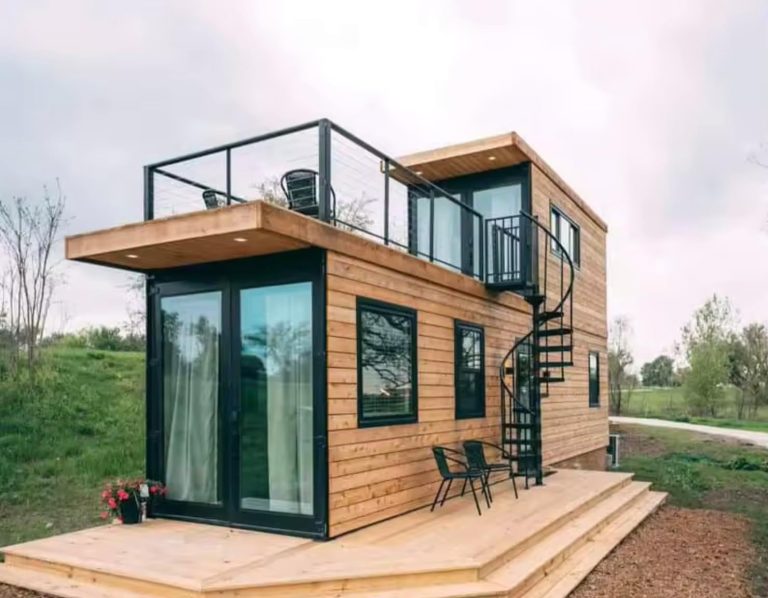The idea of converting shipping containers into homes has become a hot topic in the world of alternative housing. With promises of affordability, sustainability, and quick construction, shipping container homes seem like an appealing option for home buyers seeking something unique. But are they truly worth it? In this guide, we’ll dive into the pros, cons, costs, and factors to consider when deciding if a shipping container home is right for you.


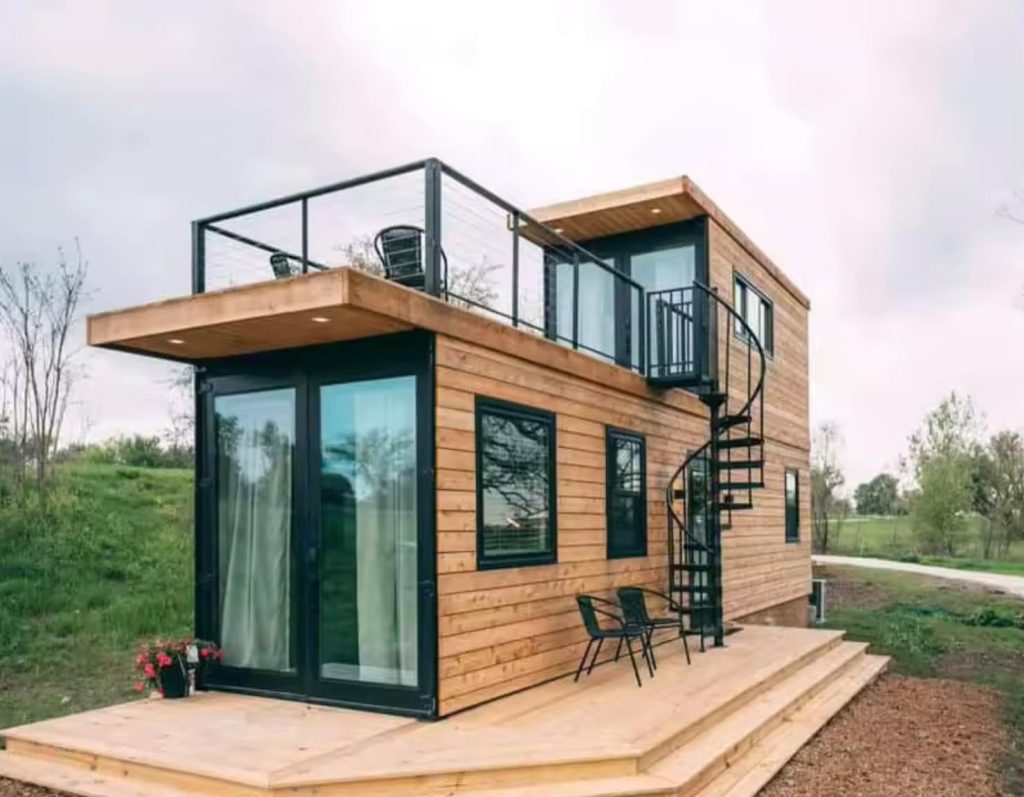
Repurposed Shipping Containers Turn Into a Living Space
Shipping container homes are exactly what they sound like—residential structures made by repurposing steel shipping containers. Originally designed to transport goods across oceans, these durable containers have now found a second life as housing units. Over the last decade, container homes have grown in popularity, offering a fresh take on minimalist and eco-friendly living. And of course the increase cost of homes and apartments also contributes this trend.
Pros of Container Homes
1. Lower Cost Compared to Traditional Homes
Shipping container homes can be significantly cheaper than conventional houses. Containers themselves are relatively inexpensive, and with fewer materials and less labor required for construction, many people can build a container home for a fraction of the cost of a traditional home.
2. Eco-Friendly and Sustainable Materials
One of the major selling points is the eco-friendliness of shipping container homes. Repurposing used containers reduces waste, and many builds incorporate sustainable features like solar panels, rainwater harvesting systems, and energy-efficient insulation.
3. Fast Construction Process
Since the structure is already built, construction times can be much quicker. A well-organized team can complete a shipping container home in just a few months, which is much faster than a traditional home.
4. Customizable and Modular Design Options
Shipping containers offer flexibility in design. Whether you want a single container tiny home or a multi-container mansion, the modular nature of these structures makes it easy to create custom layouts.
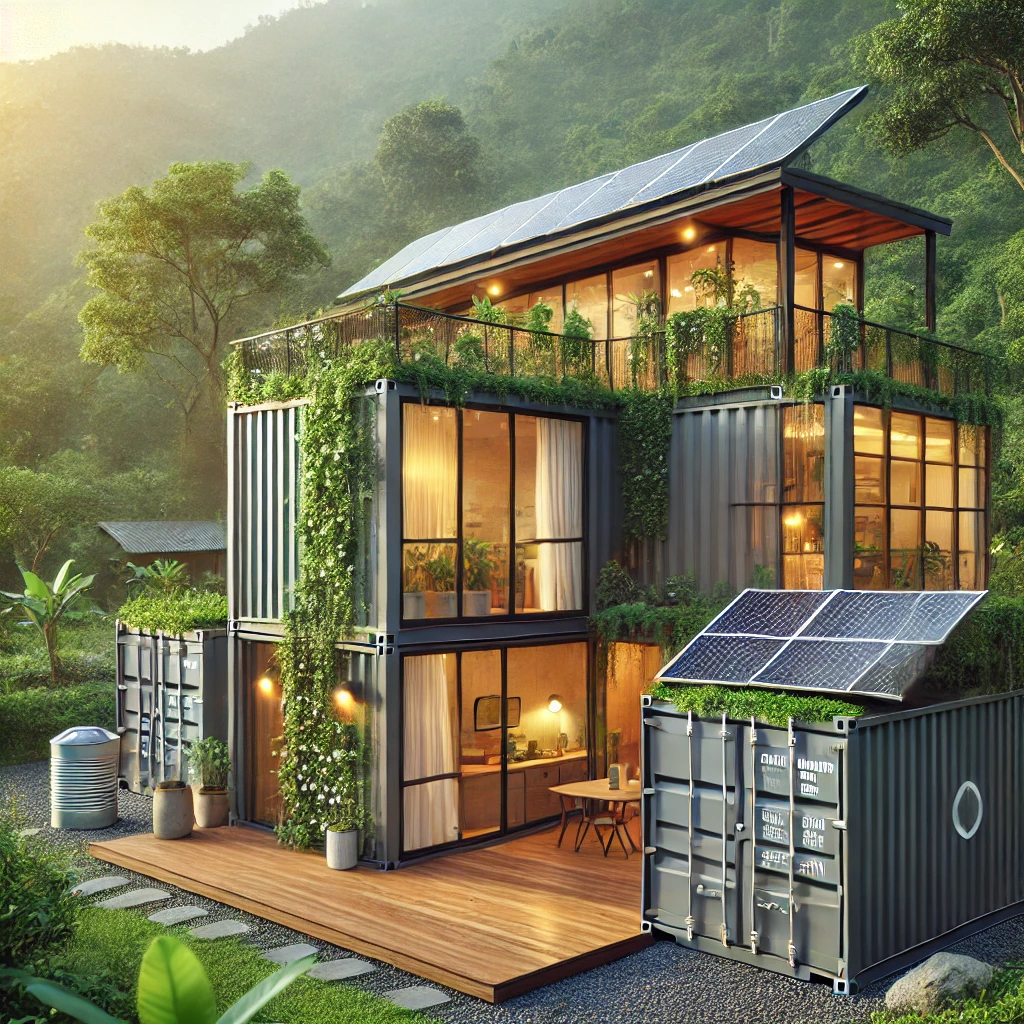

Cons of Container Homes
1. Insulation and Heating Issues
One challenge with container homes is temperature regulation. Containers are made from metal, which conducts heat and cold efficiently, meaning they can be too hot in summer and too cold in winter unless insulated properly. Insulation solutions can be costly and may offset initial savings.
2. Limited Space and Design Restrictions
Shipping containers have a fixed size—usually 20 or 40 feet long and 8 feet wide. This limited space may feel cramped, and stacking containers or expanding them requires additional engineering and structural support.
3. Potential Zoning and Legal Complications
Depending on where you live, getting the right permits for a shipping container home can be tricky. Zoning laws and building codes may not always accommodate unconventional structures, which could lead to delays and additional costs.
4. Long-Term Durability Concerns
While containers are made to withstand harsh environments, factors like corrosion, structural wear, and potential rust can affect their long-term durability. Without proper maintenance, these issues may become expensive to address over time.
Cost Breakdown of Shipping Container Homes
The cost of building a shipping container home can vary widely depending on factors like location, design, and customizations. Here’s a general breakdown of the main expenses:
- Container Costs: If you go to Amazon and buy prefabricated container homes that cost anywhere from $10,000-$50,000. If you like to try and find a used than a 40-foot container can cost anywhere from $2,000 to $5,000, while brand new ones are priced higher.
- Construction and Labor: Modifying containers, installing insulation, plumbing, and electrical work will add anywhere from $15,000 to $50,000 depending on complexity.
- Land and Permits: Purchasing land, getting necessary permits, and site preparation can significantly add to the budget.
- Utilities and Finishes: Installing heating, ventilation, air conditioning (HVAC), as well as interior finishes, can cost $10,000 to $30,000.
On average, a basic shipping container home might cost between $30,000 and $100,000. More elaborate designs or larger homes can increase the budget to $200,000 or more.
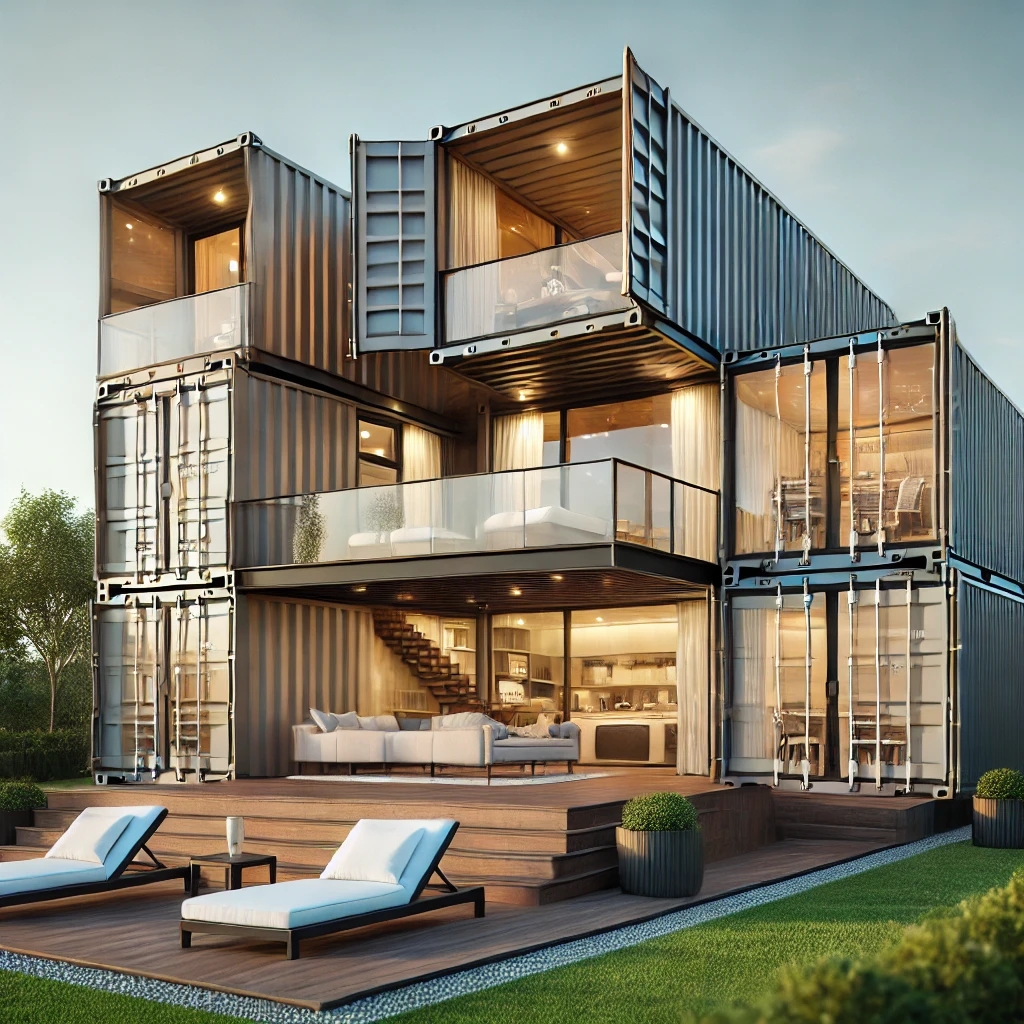
Eco-Friendly Features of Shipping Container Homes
When you reuse shipping containers, you’re reducing waste and giving new life to materials that might otherwise end up in a scrapyard. Many container homes are also equipped with eco-friendly features like:
- Solar panels for renewable energy
- Energy-efficient insulation materials
- Rainwater harvesting systems
- Low-energy lighting and appliances
These features not only reduce the home’s carbon footprint but can also lower long-term utility costs.
Common Misconceptions About Shipping Container Homes
“They’re too small to live in comfortably.”
While shipping containers are compact, creative design solutions, like open floor plans, multi-container layouts, and clever storage options, can make them feel spacious and livable.
“They aren’t safe or sturdy.”
Shipping containers are built to withstand extreme weather conditions at sea, making them incredibly durable. With proper modifications, they can be just as safe as any other home.
Are Shipping Container Homes a Good Investment?
Shipping container homes can be a good investment for those seeking affordability and sustainability. However, their resale value may not always be as high as a traditional home, especially in areas where container homes are less common. Additionally, you may face higher maintenance costs over time due to potential issues like rust or structural wear.
That said, if you value eco-friendliness, uniqueness, and are willing to invest in proper materials and finishes, a shipping container home can be a smart long-term investment.
What to Consider Before Building a Shipping Container Home
Before diving into the construction of a shipping container home, consider the following:
- Location and Land: Ensure the land you choose allows for container homes and fits within your budget.
- Zoning Laws and Permits: Research local zoning regulations to avoid legal issues.
- Contractors: Hire a contractor experienced in container home construction to avoid costly mistakes.
- Customization: Be realistic about design possibilities and budget for insulation, utilities, and finishes.
Alternative Housing Future?
Shipping container homes offer an innovative and environmentally friendly alternative to traditional housing. In fact you can find shipping container buildings and neighborhoods in many locations worldwide for residential and commercial purposes: Detroit, Michigan, London, UK, Copenhagen, Denmark, Mumbai, India, Perth,Australia, Johannesburg, South Africa, Buenos Aires, Argentina and many others.
While they come with certain challenges, like insulation and legal hurdles, they also provide significant benefits, including affordability, quick construction, and customization. And with the increase in popularity of this kind of living (According to skyquestt Global Container Homes Market size was valued at $60 billion in 2022 and is anticipated to grow to $98.96 billion by 2031). more solutions will arise to make them even more affordable and fitting.
FAQ
What is an average size of a shipping container home?
The average size of a shipping container home typically depends on the number of containers used and their configuration. Shipping containers come in two standard sizes:
20-foot container:Size: 20 feet long, 8 feet wide, and 8.5 feet tall (160 square feet of floor space).
40-foot container:Size: 40 feet long, 8 feet wide, and 8.5 feet tall (320 square feet of floor space).
How much should a shipping container home cost?
1. Basic DIY Shipping Container Home:
Cost: $10,000 to $35,000
This includes the cost of the containers (typically $2,000 to $5,000 per container for a used one), basic insulation, plumbing, wiring, and minimal interior finishes. It’s ideal for small homes with one or two containers.
2. Mid-Range Custom Shipping Container Home:
Cost: $50,000 to $100,000
These homes often include multiple containers, more sophisticated designs, high-quality insulation, upgraded finishes, windows, doors, and customized layouts. Professional builders may be involved, adding labor costs.
3. Luxury Shipping Container Home:
Cost: $100,000 to $250,000+
This category includes high-end custom builds with multiple containers, architectural design elements, energy-efficient features, high-end materials, custom-built interiors, and amenities like HVAC systems, high-quality finishes, and landscaping.
Additional Costs to Consider:
Land: Prices vary by location and may require preparation (clearing, grading, etc.).
Permits: Zoning and building permits could cost anywhere from a few hundred to several thousand dollars, depending on the location.
Utility Hookups: Connecting water, sewage, electricity, and other utilities can cost between $5,000 and $30,000, depending on proximity to existing infrastructure.
Transportation and Installation: Moving and stacking containers requires cranes and transportation services, which could add another $5,000 to $15,000.
Where to buy container homes?
Online retailers:
Amazon: Believe it or not, you can find container home kits on Amazon. These are usually small, pre-built homes or kits that you can assemble on your land.
eBay: Some sellers offer new or used shipping container homes, as well as custom designs, on eBay.
Alibaba: This global marketplace features manufacturers from around the world offering prefabricated container homes at competitive prices.
Shipping Container Home Companies
Backcountry Containers (USA): Based in Texas, they offer custom-designed container homes with unique layouts and high-quality finishes.
Honomobo (Canada): A Canadian company that creates luxurious and modern shipping container homes, including energy-efficient options with solar power integration.

